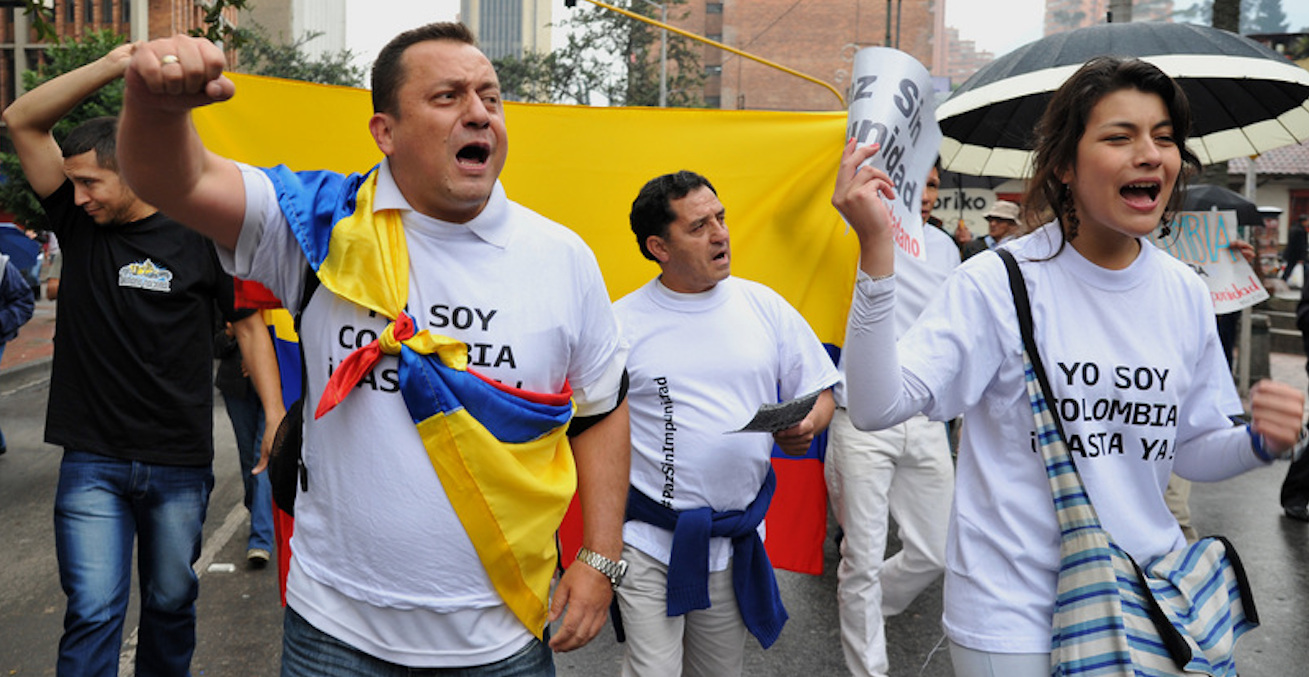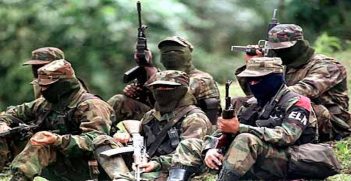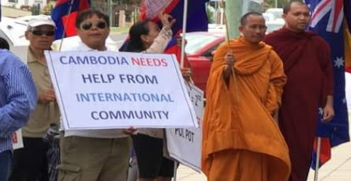Human Rights Defenders Assassinated in Colombia

Colombia’s murder rate is at an all-time low but there has been a worrying jump in the number of assassinations of activists. Despite the 2016 national peace agreement it means social leaders increasingly walk the streets in fear.
Since the final signing of the 2016 peace agreement between the Colombian government and the Common Alternative Revolutionary Force (FARC), there has been a worrying increase in the systematic assassinations of social leaders and human rights activists throughout the country.
In March, the Office of the United Nation’s High Commissioner for Human Rights (OHCHR) released its annual report on the human rights situation in Colombia during the ongoing implementation of the agreement. The OHCHR registered a total of 441 attacks in 2017, including 121 killings. According to the report, this included 84 human rights defenders in leadership roles, 23 members of social and political movements, and 14 individuals killed during protests. Furthermore, they recorded 41 attempted murders, 213 threats against individuals, 61 violations of privacy and property, four forced disappearances and the rape of a woman activist.
These figures differ slightly from the office of the Colombian ombudsman, which recorded 134 homicides in 2016, 126 in 2017 and 22 between 1 January and 27 February 2018. It’s a total of 282 people killed in the defence of human rights and their community. With at least six more social leader assassinations recorded so far, what are the factors that are contributing to these killings?
Failed security guarantees
Although not exclusive, there are three key trends that are influencing the proliferation of violence against this group. The first has to do with ongoing implementation of the agreement, specifically in terms of provisions pertaining to security guarantees. The 2016 peace agreement commits to the establishment of the Comprehensive Security System for the Exercise of Politics. It’s not only designed to provide security guarantees for political opposition and FARC’s political party, but also specifically “for leaders of social movements and organisations, and those defending human rights”. This is supposed to include the implementation of both an early warning system and protection program, and a special committee to investigate crimes against leaders of such movements.
Understandably, the implementation of the robust agreement is progressing slowly but steadily. According to the Kroc Institute, which is responsible for monitoring and analysing the implementation phase, only 251 of the 558 stipulated implementation activities are underway (45 per cent), with no activity in relation to 307 others, as of 31 August 2017. Of the 251, only 17 per cent had been fully implemented, 6 per cent had been implemented at an intermediate level, and 22 per cent minimally implemented.
The Kroc Institute specifically notes that one of the concrete areas that requires more effective implementation with urgency are the security and protection measures for FARC ex-combatants, social leaders, human rights defenders and communities in the territories. Worryingly, they note that there have only been normative advancements and a security deployment, but these have not yet been effective at the territorial level and the perception of security amongst these vulnerable populations has not changed.
On top of this, the agreement’s implementation has been plagued by issues at the political level. This has included delays in many of the provisions being delivered to these rural communities either as a result of incapacity or, according to some observers, unwillingness. This has further been complicated by political and legislative debates about the regulation of the agreement, and the ongoing fight between the government and oppositions in the lead up to the 2018 presidential election campaign.
Post-FARC demobilisation
Another key trend contributing to the increase in assassinations of Colombia’s social leaders is the changing dynamics of the Colombian conflict. In particular, the vacuums that have been left after FARC’s demobilisation and the conflict between various armed groups to assert influence over these territories. The Ombudsman recorded that of the 282 murders between 1 January 2016 and 27 February 2018, the highest number of deaths took place in the departments of Cauca (75), Antioquia (38), Norte de Santander (17), Nariño (15), Valle de Cauca (15) and Chocó (14).
Despite FARC’s disarmament, the government still has to deal with armed actors that continue to perpetrate acts of violence and generate insecurities for communities in and around their areas of operation. Moreover, these groups are seeking to expand into territories once held by FARC.
First, there are roughly 800-1,000 FARC dissidents that refused to disarm and demobilise with the rest of the organisation, who are seeking to consolidate territory and enhance their involvement in illegal economic activities. Second, organised crime groups are moving and strengthening in order to capitalise on the rapid increase in coca cultivation and cocaine production since 2013. The largest and strongest of these is the Gulf Clan, otherwise known as the Gaitanista Self-Defense Forces of Colombia.
Many social leaders have been killed in areas of disputed territory or for their work representing or carrying out various plans in the peace agreement. However, others such as María Magdalena Cruz and Nixon Mutis Sossa, were recently assassinated for their promotion and work regarding the eradication and substitution of illicit crops, as outlined in the agreement.
Finally, despite ongoing negotiations with the National Liberation Army (the ELN), the insurgency has simultaneously been expanding into areas where it previously did not enjoy territorial control, such as northern Cauca, Norte de Santander and Chocó. Cauca, the department with the highest number of deaths, is experiencing all three of these shifts in conflict dynamics.
There is no denying that the peace agreement implementation is a long and increasingly complicated endeavour, and there have been solid efforts by the government to work towards carrying out these plans. Despite this, it is of upmost importance that social leaders and their communities, and defenders of human rights, who have traditionally suffered as a result of the country’s conflict, receive the protection they deserve. Given ongoing threats to their security, greater attempts need to be made to ensure that they do not continue to experience the same degree of vulnerability in the post-conflict phase.
Alexandra Phelan is a researcher, PhD candidate and teaching associate working at Monash University’s Gender, Peace and Security Centre on the Colombian case for the Australian Research Council (ARC) Linkage Project, ‘Towards Inclusive Peace: Mapping Gender Provisions of Peace Agreements’.
This article is published under a Creative Commons Licence and may be republished with attribution.





